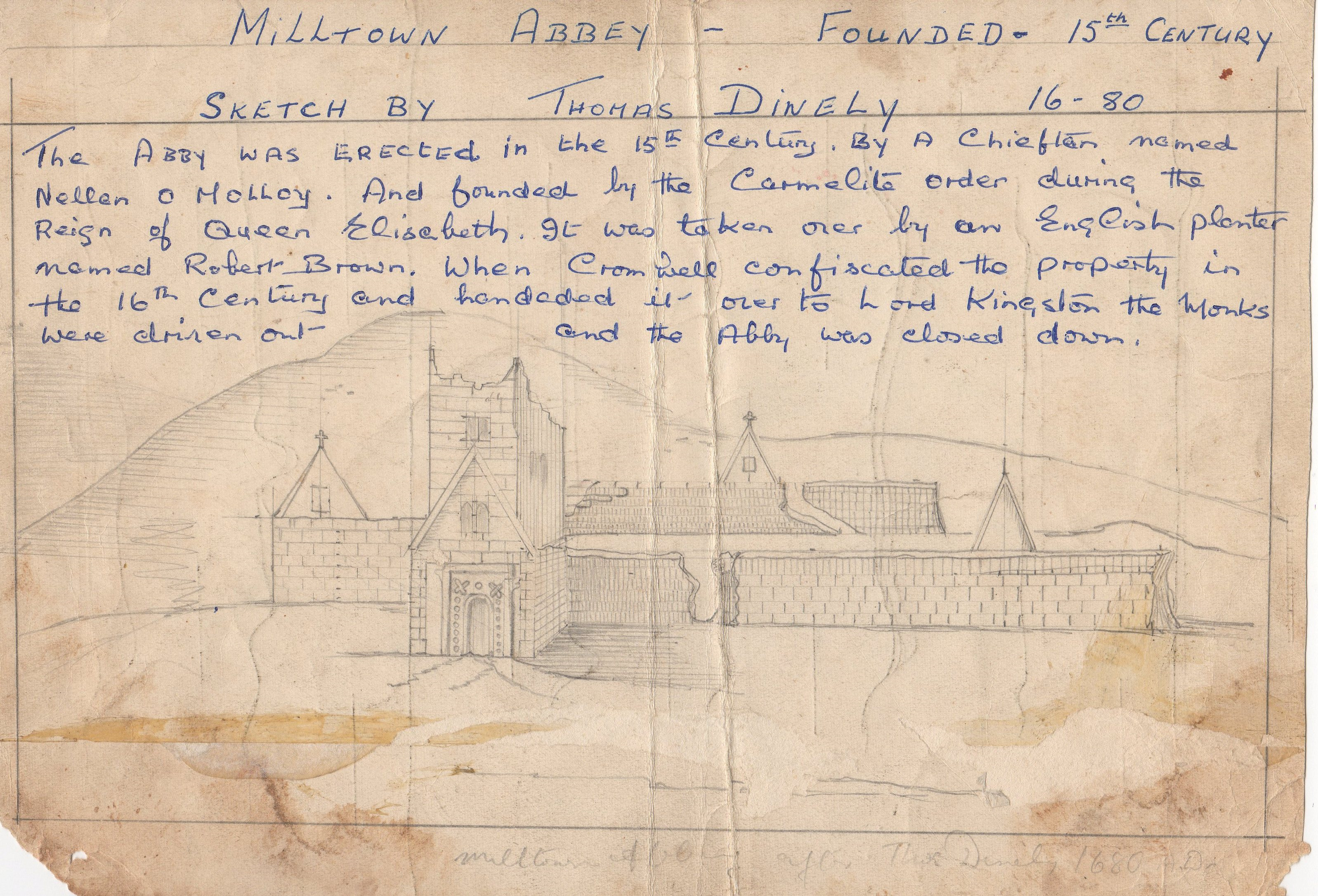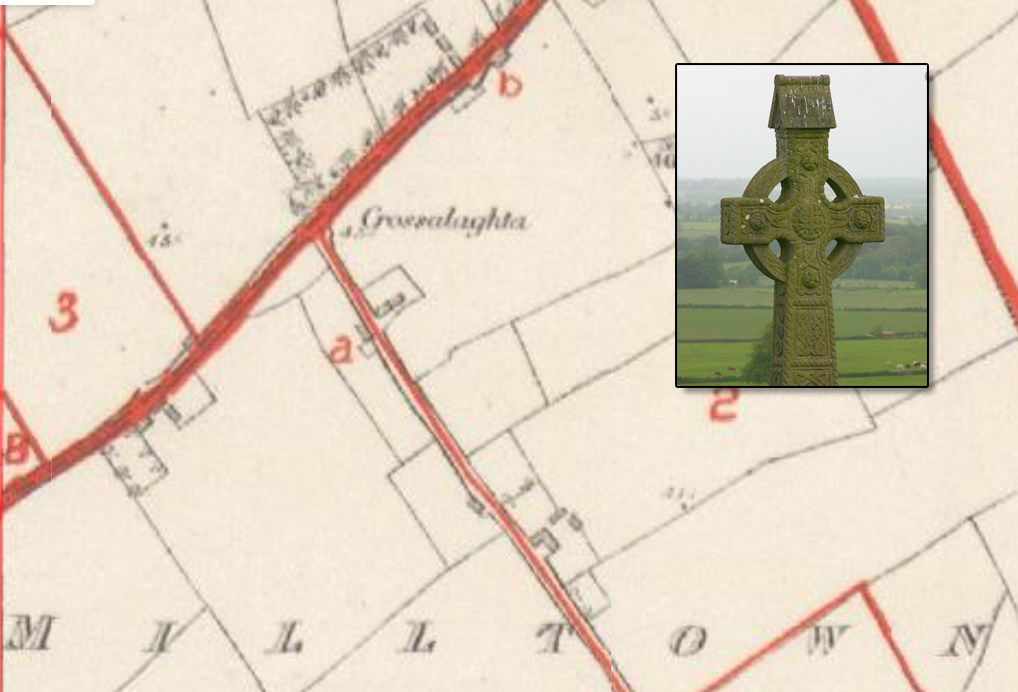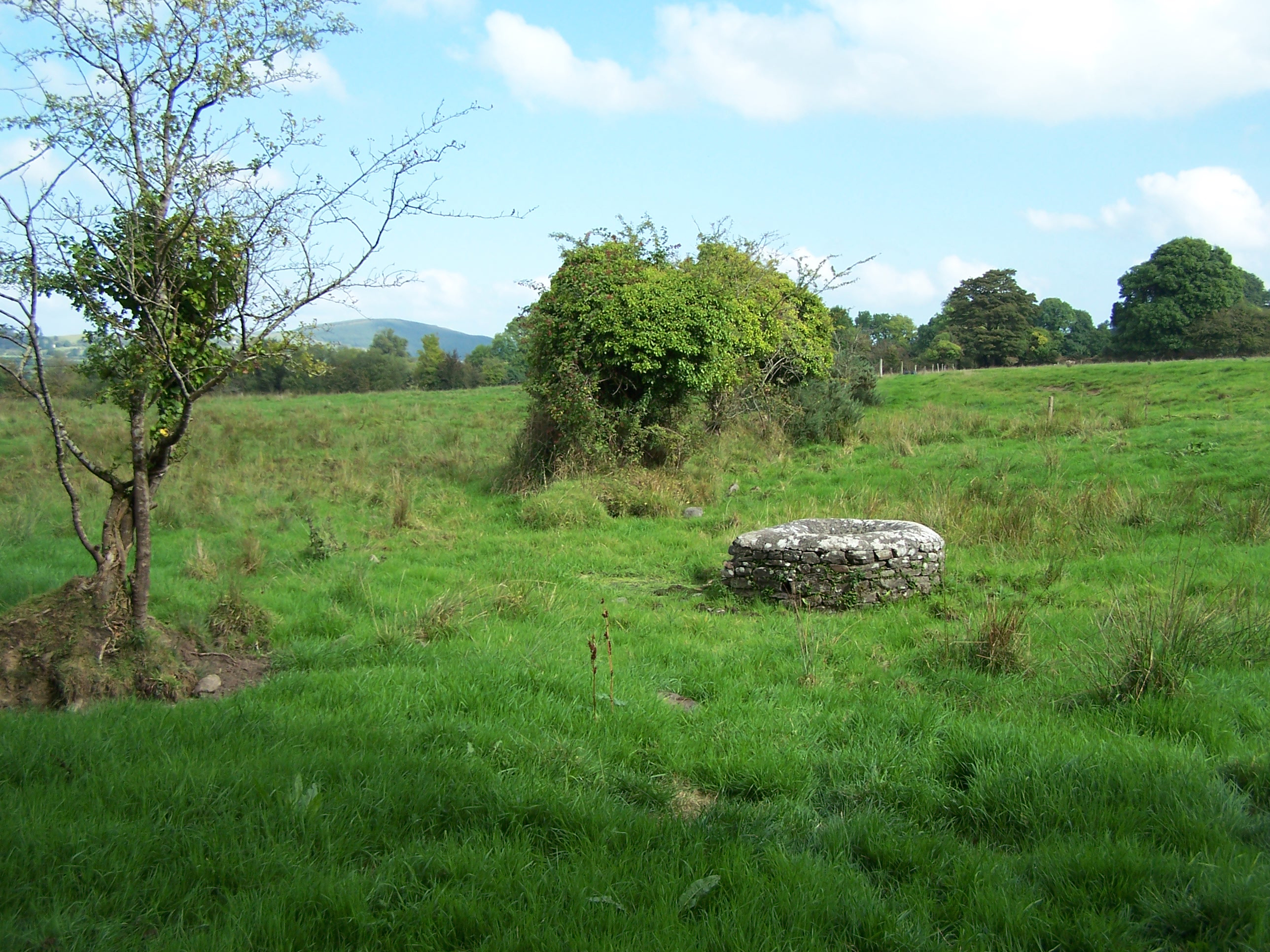
Catherine Sampson O'Dea (left front) and her daughter Catherine O'Dea in front of the O'Dea Homestead North of Kilteely
With that in mind, pour a cup of tea and take some time to wander about meeting some of our oldest ancestors and some of their decendants who immigrated to places like Australia, New York, Boston, Illinois and Iowa.
The picture in the banner of this page was taken in the 1950's and shows one of the last remaining buildings from the time of the great famine. It belonged to Robert (son of John and Mary Apjohn O'Dea) and Catherine Collin O'Dea and may have been build in Miltown soon after their marriage in 1829.

Milltown Abbey c. 1680
Having examined the parish of Agliscormick for the Ordnance Survey c. 1854, a Mr. O'Keeffe noted that "A spot of untilled ground surrounded by cultivated fields in the townland of Milltown (Hib. Baile Mhuilinn) on the north side of the road from Kilteely to Limerick, is pointed out by the people as the site of an old Abbey." No conclusive traces were visible at the time of O'Keeffe's investigation c. 1840.
The stones from this abbey were probably scavanged by the O'Dea families in Milltown and used to build many of the dwellings and buildings that appeared in the House Books of 1836. It is probably that Darby O'Dea, son of Thomas, was born on this site and that his sister, Margaret, and her husband, Thomas Bartley (a blacksmith) lived next door. Both familes emigrated during the Great Famine in the late 1840's.

The Cross of Lought

The Well of St. Patrick



